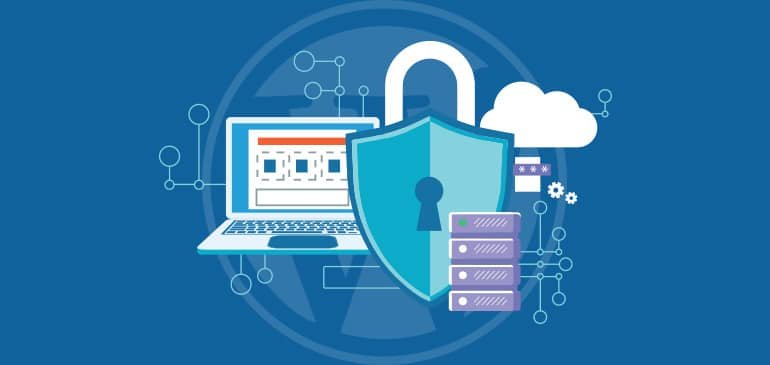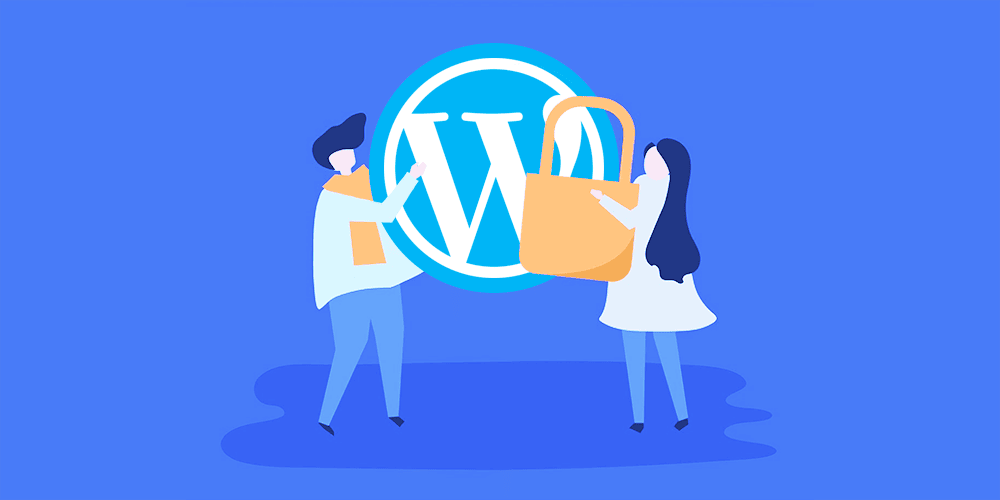As you may know, WordPress is one of the most popular content management systems in the world, powering millions of websites across the internet. However, with great popularity comes great responsibility, and website owners must take steps to ensure that their WordPress sites are secure from potential threats.
In recent years, there has been a rise in cyber attacks targeting WordPress sites, with hackers exploiting vulnerabilities in the system to gain access to sensitive information or to take control of the website. These attacks can have serious consequences, ranging from data breaches to website downtime, and can even result in permanent damage to a website’s reputation.
That’s why it’s crucial for website owners to take WordPress security seriously and to implement best practices to protect their sites. In this article, we’ll be discussing some of the most effective tips and best practices for WordPress security, as well as some advanced measures that can be taken to enhance website security.
So, whether you’re a seasoned WordPress user or just starting out, join me as we explore the world of WordPress security and learn how to keep our websites safe from harm.
Protecting Your WordPress Site: Understanding the Most Common Security Threats
As we mentioned earlier, WordPress sites are vulnerable to a variety of security threats that can compromise the integrity of the website and put sensitive information at risk. In this section, we’ll be discussing some of the most common security threats that WordPress sites face and how to protect against them.
One of the most prevalent threats to WordPress sites is malware. Malware is a type of software that is designed to harm a computer system, and it can be introduced to a website through a variety of means, such as infected plugins or themes. Once malware is present on a website, it can cause a range of issues, from slowing down the site to stealing sensitive information.
Another common security threat is brute force attacks. These attacks involve hackers attempting to guess a website’s login credentials by trying a large number of username and password combinations. If successful, the hacker can gain access to the website and potentially cause significant damage.
SQL injections are another type of security threat that WordPress sites face. These attacks involve hackers injecting malicious code into a website’s database, which can allow them to access sensitive information or even take control of the website.
To protect against these and other security threats, it’s important to implement best practices for WordPress security, such as keeping WordPress and plugins up to date, using strong passwords, and limiting login attempts. In the next section, we’ll be discussing some of the best practices for WordPress security in more detail.

Best Practices for WordPress Security
Now that we’ve discussed some of the most common security threats that WordPress sites face, let’s talk about some of the best practices for keeping your website secure. By following these best practices, you can significantly reduce the risk of your website being compromised by hackers or malware.
First and foremost, it’s important to keep WordPress and all plugins up to date. WordPress releases regular updates that address security vulnerabilities and other issues, so it’s crucial to install these updates as soon as they become available. The same goes for plugins – outdated plugins can be a major security risk, so make sure to keep them up to date as well.
Another important best practice is to use strong passwords. Weak passwords are one of the easiest ways for hackers to gain access to a website, so it’s important to use complex passwords that are difficult to guess. This means using a combination of letters, numbers, and symbols, and avoiding common words or phrases.
Limiting login attempts is another effective way to protect your WordPress site. By limiting the number of login attempts allowed, you can prevent hackers from using brute force attacks to guess your login credentials. There are several plugins available that can help you implement this best practice.
Finally, it’s important to regularly back up your website. In the event that your website is compromised, having a recent backup can be a lifesaver. Make sure to store your backups in a secure location, such as an external hard drive or cloud storage service.
By following these best practices, you can significantly reduce the risk of your WordPress site being compromised by security threats. In the next section, we’ll be discussing some of the most popular security plugins for WordPress and how they can be used to enhance website security.
WordPress Security Plugins
In addition to following best practices for WordPress security, there are also several security plugins available that can help you protect your website from potential threats. These plugins can provide an extra layer of security and help you detect and prevent security breaches before they cause significant damage. ( See How to install a WordPress Plugin if needed )
Wordfence
One of the most popular security plugins for WordPress is Wordfence. Wordfence is a comprehensive security plugin that includes features such as malware scanning, firewall protection, and login security. It also includes real-time threat defense feed that provides up-to-date information on the latest security threats.
Sucuri Security
Another popular security plugin is Sucuri Security. Sucuri Security offers a range of security features, including malware scanning, blacklist monitoring, and security hardening. It also includes a website firewall that can help protect your website from attacks.
iThemes Security
iThemes Security is another popular security plugin that offers a range of features, including malware scanning, brute force protection, and two-factor authentication. It also includes a security dashboard that provides an overview of your website’s security status.
By installing one of these security plugins (or another reputable security plugin), you can significantly enhance your website’s security and protect against potential threats. However, it’s important to note that security plugins are not a substitute for following best practices for WordPress security – they should be used in conjunction with best practices to provide the best possible protection for your website.
In the next section, we’ll be discussing some advanced security measures that can be taken to further enhance your WordPress security.
Advanced Security Measures for Your WordPress Site
For website owners who want to take their WordPress security to the next level, there are several advanced security measures that can be taken. These measures can provide an extra layer of protection and help you detect and prevent security breaches before they cause significant damage.
One advanced security measure that can be taken is implementing two-factor authentication. Two-factor authentication requires users to provide two forms of identification (such as a password and a code sent to their phone) in order to log in to a website. This can significantly reduce the risk of unauthorized access to your website.
Another advanced security measure is using a content delivery network (CDN). A CDN is a network of servers that are distributed around the world and can help improve website performance and security. By using a CDN, you can reduce the risk of DDoS attacks and other security threats.
Setting up a web application firewall (WAF) is another advanced security measure that can be taken. A WAF is a type of firewall that is specifically designed to protect web applications from attacks. It can help detect and block malicious traffic before it reaches your website.
Finally, it’s important to regularly monitor your website for security threats. This can be done through tools such as security scanners and log analysis. By monitoring your website for potential threats, you can detect and prevent security breaches before they cause significant damage.
By implementing these advanced security measures (or others that may be appropriate for your website), you can significantly enhance your WordPress security and protect against potential threats. However, it’s important to note that these measures should be used in conjunction with best practices for WordPress security and reputable security plugins to provide the best possible protection for your website.
In the next section, we’ll be wrapping up our discussion on WordPress security and providing some final tips and recommendations for website owners.

WordPress Security: Final Thoughts and Recommendations
Congratulations! You’ve made it to the end of our discussion on WordPress security. We’ve covered a lot of ground, from the most common security threats that WordPress sites face to the advanced security measures that can be taken to enhance website security.
As we’ve discussed, WordPress security is a crucial aspect of website ownership, and website owners must take steps to ensure that their sites are secure from potential threats. By following best practices for WordPress security, installing reputable security plugins, and implementing advanced security measures, website owners can significantly reduce the risk of their sites being compromised by hackers or malware.
However, it’s important to remember that WordPress security is an ongoing process. Threats are constantly evolving, and website owners must remain vigilant and proactive in their efforts to protect their sites. Regularly updating WordPress and plugins, using strong passwords, and monitoring your website for potential threats are all important steps that should be taken on an ongoing basis.
In conclusion, we hope that this article has provided you with valuable insights and recommendations for protecting your WordPress site. Remember, Dee Dee, get out of my laboratory! It’s time to put our scientific knowledge into action and keep our websites safe from harm.




